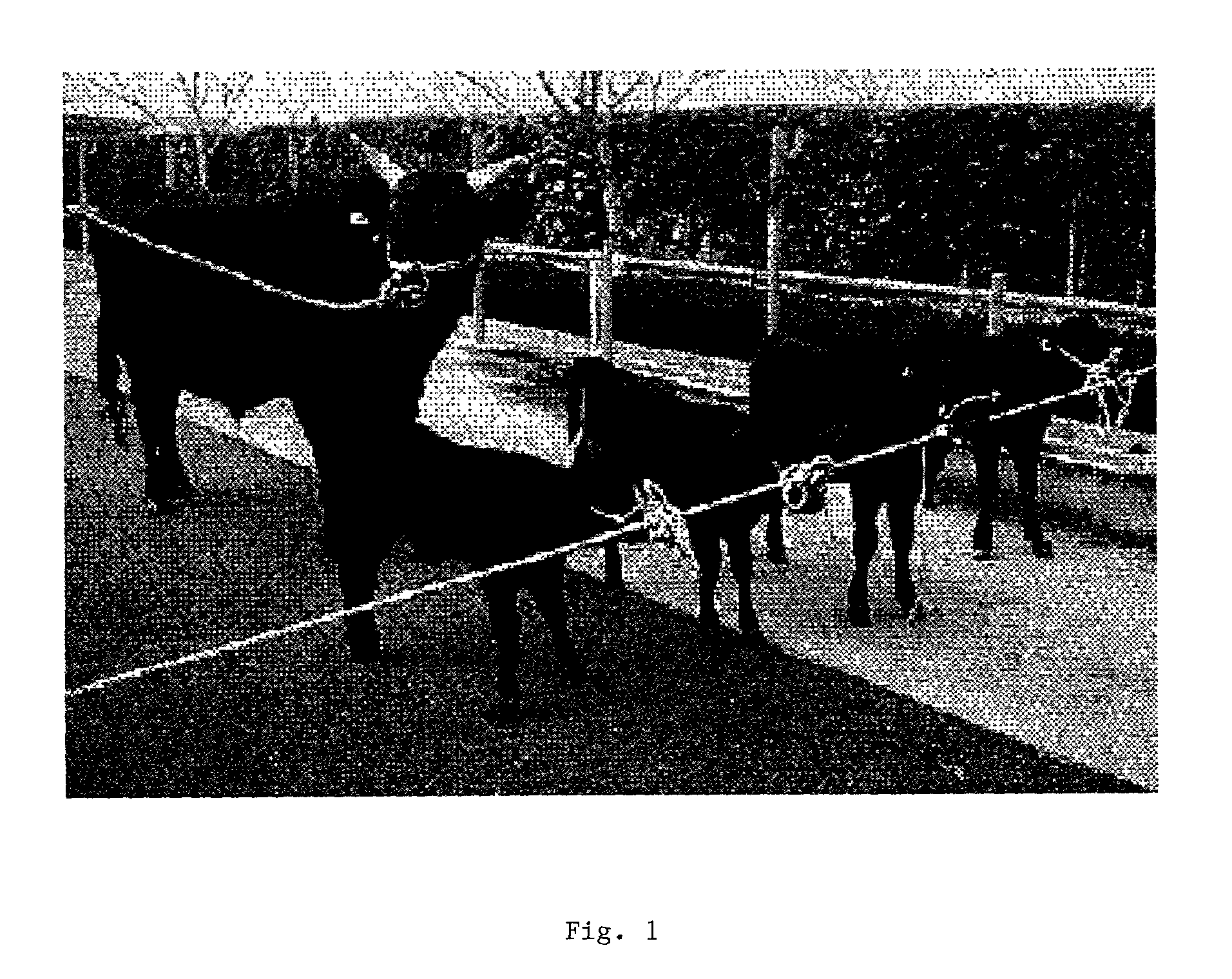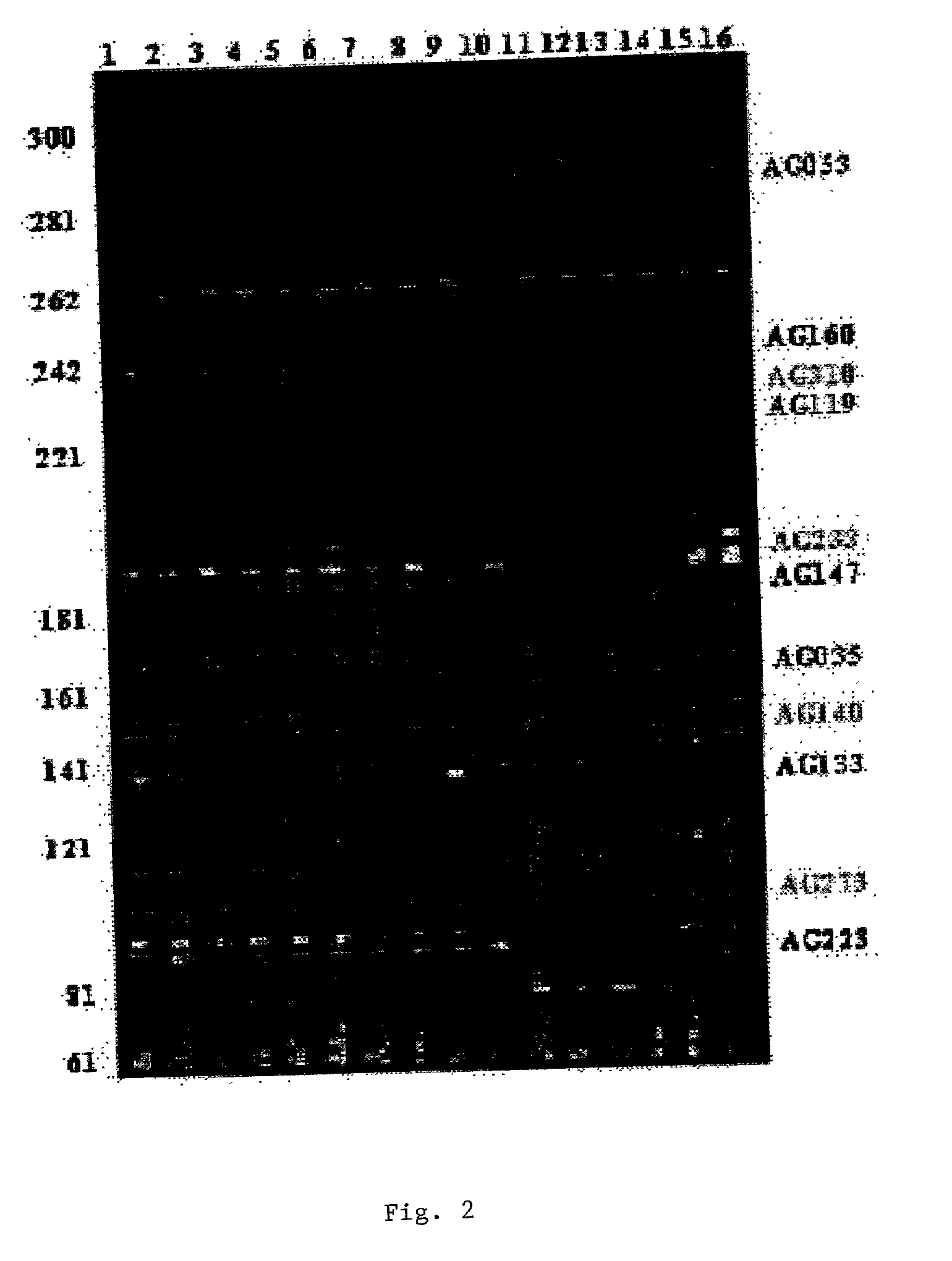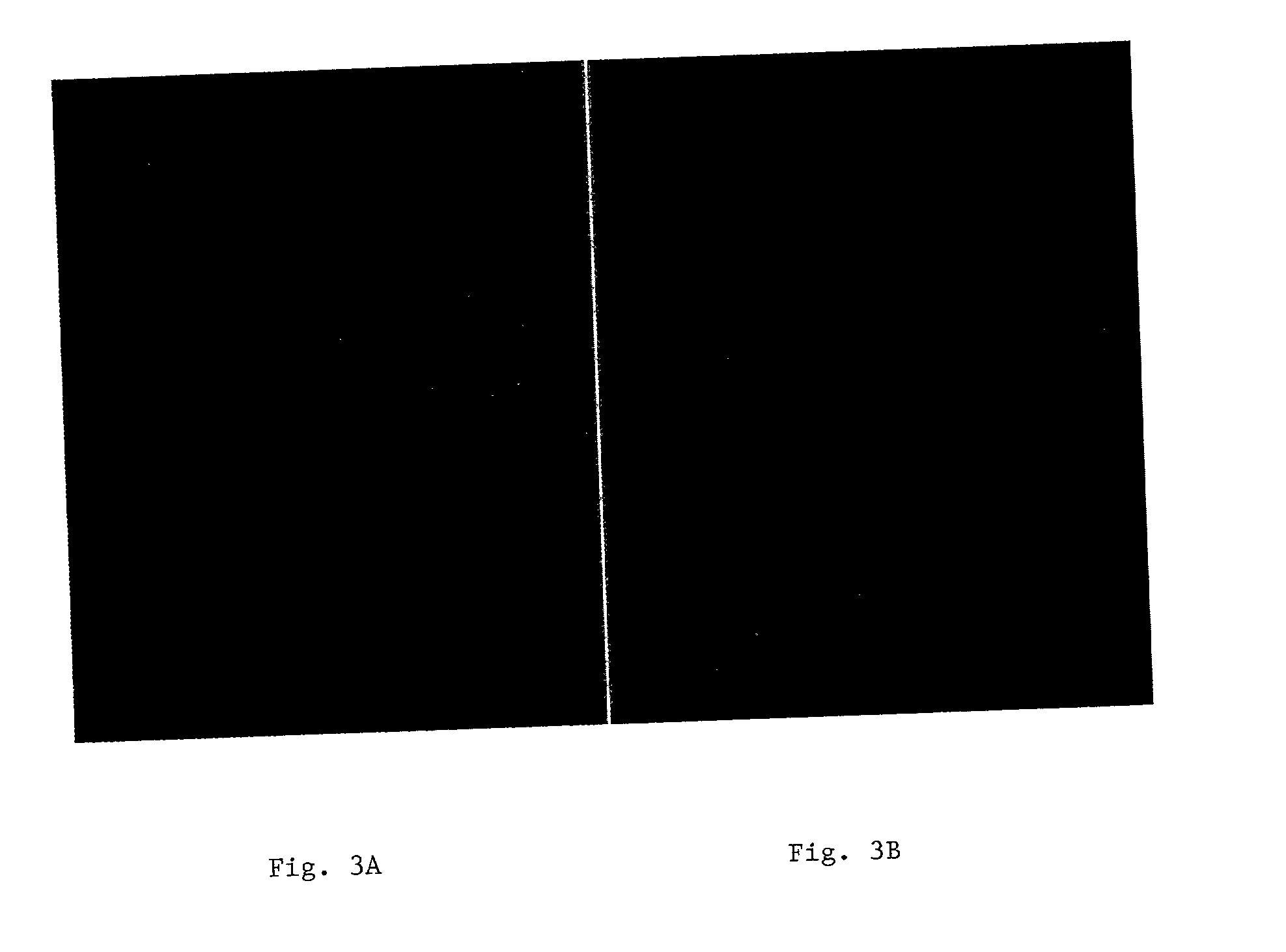Method for cloning animals with targetted genetic alterations by transfer of long-term cultured male or female somatic cell nuclei, comprising artificially-induced genetic alterations, to enucleated recipient cells
a somatic cell and target technology, applied in the field of nuclear transfer, can solve the problems of not being able to demonstrate viable animals produced by their methodologies with nens somatic cell nuclei donation, not being able to achieve the same success rate of cloning bovine animals using nuclear transfer techniques, and being extremely sensitive to low temperatures
- Summary
- Abstract
- Description
- Claims
- Application Information
AI Technical Summary
Benefits of technology
Problems solved by technology
Method used
Image
Examples
example 2
Preparation of Cloned Embryos From Adult Rabbit Fibroblasts Long-term Culture
[0142] Rabbit embryos have been successfully cloned using long term fibroblasts by the methods described herein.
[0143] Materials and Methods
[0144] Source of Oocytes and Zygotes:
[0145] Mature Dutch-belted female rabbits were superovulated (Yang et al., Mol. Reprod. Dev. 27: 110-117 (1990)) with two 0.3-mg and four 0.4-mg subcutaneous injections of FSH (FSH-P, Schering-Plough Animal Health, Kenilworth, N.J.), given 12 h apart. Twelve hours after the last FSH injection, 100 IU hCG (Sigma, St Louis, Mo.) was injected i.v. to induce ovulation. At 13.5 hours after the hCG injection, the animals were laparatomized and ovulated oocytes were flushed from the oviducts with Dulbecco-modified PBS supplemented with 3 mg / ml BSA (Fraction V, Sigma A-9418). Cumulus cells were removed by short exposure to 10 .mu.g / ml hyaluronidase (Sigma) in D-PBS solution and subsequent pipetting with 20 a small-bore Pasteur pipette.
[0146]...
PUM
| Property | Measurement | Unit |
|---|---|---|
| diameter | aaaaa | aaaaa |
| birth weights | aaaaa | aaaaa |
| temperatures | aaaaa | aaaaa |
Abstract
Description
Claims
Application Information
 Login to View More
Login to View More - R&D
- Intellectual Property
- Life Sciences
- Materials
- Tech Scout
- Unparalleled Data Quality
- Higher Quality Content
- 60% Fewer Hallucinations
Browse by: Latest US Patents, China's latest patents, Technical Efficacy Thesaurus, Application Domain, Technology Topic, Popular Technical Reports.
© 2025 PatSnap. All rights reserved.Legal|Privacy policy|Modern Slavery Act Transparency Statement|Sitemap|About US| Contact US: help@patsnap.com



